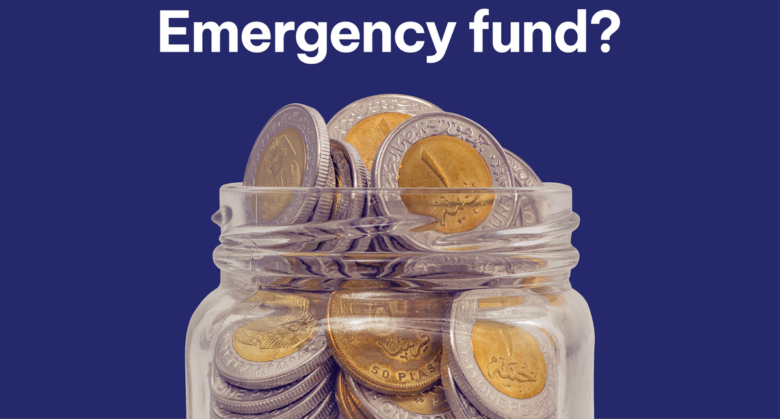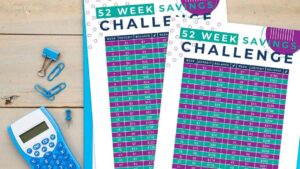An emergency fund is one of the most important financial tools a person can have. Life is full of unexpected events, such as medical crises, car repairs, job loss, or unexpected housing costs. These situations can lead to anxiety, debt, and even bankruptcy due to a lack of financial cushion. An emergency fund provides peace of mind and confidence. It allows you to deal with emergencies without the need for a loan or credit card. We created this fund specifically to address unforeseen circumstances. It’s a way to stabilize your life, not just a financial cushion.
How an Emergency Fund Protects You
Emergencies can happen unexpectedly. Even a small setback can trigger a series of larger financial problems if you’re not financially prepared. For example, medical expenses can lead to credit card debt, which can lead to interest charges and bad credit. An emergency fund is a safety net that protects you before you get into trouble. It can help you maintain your lifestyle during difficult times, help you stay debt-free, and give you the freedom to make informed choices. If not, even a small disaster can ruin your entire budget.
Determine How Much Money to Set Aside
The amount of money you should have in an emergency fund is not universally applicable. However, an amount equal to three to six months of living expenses is commonly recommended. Typically, this money is used to pay for other necessary expenses, such as transportation, utilities, food, insurance, and rent or mortgage payments. Your unique situation (job security, number of dependents, and health) will determine the appropriate amount. Some people may need more, while others may need to start with less and build on that over time. It’s important to start with reasonable goals and adjust as your financial situation changes. A few hundred dollars is better than nothing.
Where to Keep Your Emergency Fund
Building an emergency fund is one thing; choosing the right place to keep it is just as important. Keep your money separate from your daily expenses and in an easily accessible account. A high-yield savings account is often recommended because it allows your money to grow with interest and be readily available when you need it. Don’t invest your emergency fund in the long term. Your money could get stuck, lose value, or be invested in stocks. The goal is safety and quick access, not high returns. For best results, keep your information in a secure, discreet, and mobile place.
Start Small and Keep Going
Especially if you’re living paycheck to paycheck, the thought of months of expenses can be daunting. That’s why it’s important to start small. Even if you’re putting away $10 to $20 a week, that can add up over time. Consistency is more important than the amount you save initially. Set up automatic contributions to your emergency fund so you don’t have to think about it. As you get more comfortable with saving, you can increase the amount. Most importantly, start practicing. Over time, these small savings can add up to a significant financial cushion.
Find Room in your Budget for Savings
To create an emergency fund, you need to free up extra money in your budget. This may mean cutting back on non-essential expenses, like groceries, subscriptions, or eating out. Creating a basic monthly budget will assist you in understanding your spending patterns and identifying areas for improvement. Just be more careful with your money; you don’t have to live in poverty. Even small amounts can accelerate your growth by moving money from less important expenses to an emergency fund. Creating a budget is about controlling where you spend your money, not restricting your spending.
Keep your Goals in Mind and Stay Motivated
While it’s not exactly exciting, saving for a crisis is necessary. Keep your fund’s goals in mind to stay inspired. Think of it as a shield that protects your future. Be happy about the small victories along the way. Celebrate your progress when you earn your first $500. If you’ve saved money for a whole month, congratulate yourself. These small successes will motivate you. Charts and apps are examples of visual aids that can help you track your progress and stay focused. Every dollar saved can bring you more financial peace of mind.
Avoiding the Temptation to Spend the Fund
Set aside some money that you can easily use in non-emergency situations. That’s why discipline is absolutely key. True emergencies (unplanned, necessary expenses like medical bills, car repairs, or a temporary loss of income) should be the only reason you use your emergency fund. It shouldn’t apply to vacations, gadgets, or regular bills. Clearly label your money and keep it in separate accounts to avoid temptation. Understanding the difference between a need and a real crisis is crucial for maintaining the integrity of the fund.
Recovering after Depleting Funds
Don’t feel guilty about having to dip into your emergency savings. That’s precisely what it’s there for. The most important thing is to start recovering as soon as possible. If it means beginning with smaller amounts again, please resume your saving habits. Life happens; the smartest financial choice is to dip into your emergency fund when the situation calls for it. Ignoring the need to rebuild is a real threat. Make it a priority so you’re always prepared for whatever comes your way. Construction and remodeling are a normal part of financial life.
Conclusion
One of the smartest financial decisions you can make is to create an emergency fund. It can give you a sense of control during tough times, reduce stress, and protect you from unexpected setbacks. A strong financial safety net comes from starting small, being consistent, and making smart decisions. Even though it takes time to create, the peace of mind it provides is priceless. Every dollar you save increases your sense of security and makes you better prepared for life’s changes. Give your future self the gift of financial security now; don’t wait until a crisis strikes to realize the magnitude of it.
FAQs
1. Why do I need an emergency fund if I already have a credit card?
Credit cards come with interest and debt. Having an emergency fund can help you manage unexpected expenses without going into debt, keeping your finances healthier in the long run.
2. How much money do I want to set aside in my emergency fund?
A reasonable guideline is three to six months of essential living expenses. Start with a modest goal, like $500 or $1,000, and build it up slowly.
3. Where should I keep my emergency fund?
Open a unique, high-yield savings account that is easy to access but difficult to spend. It should be safe, liquid, and separate from your daily expenses.
4. What defines an emergency?
True emergencies are unplanned, necessary expenses, like medical bills, necessary car repairs, or a temporary loss of income. Planned expenses or luxuries are not.
5. How should I use this money?
If you must use it, do so without guilt. Then focus on slowly recovering and preparing for the future.




